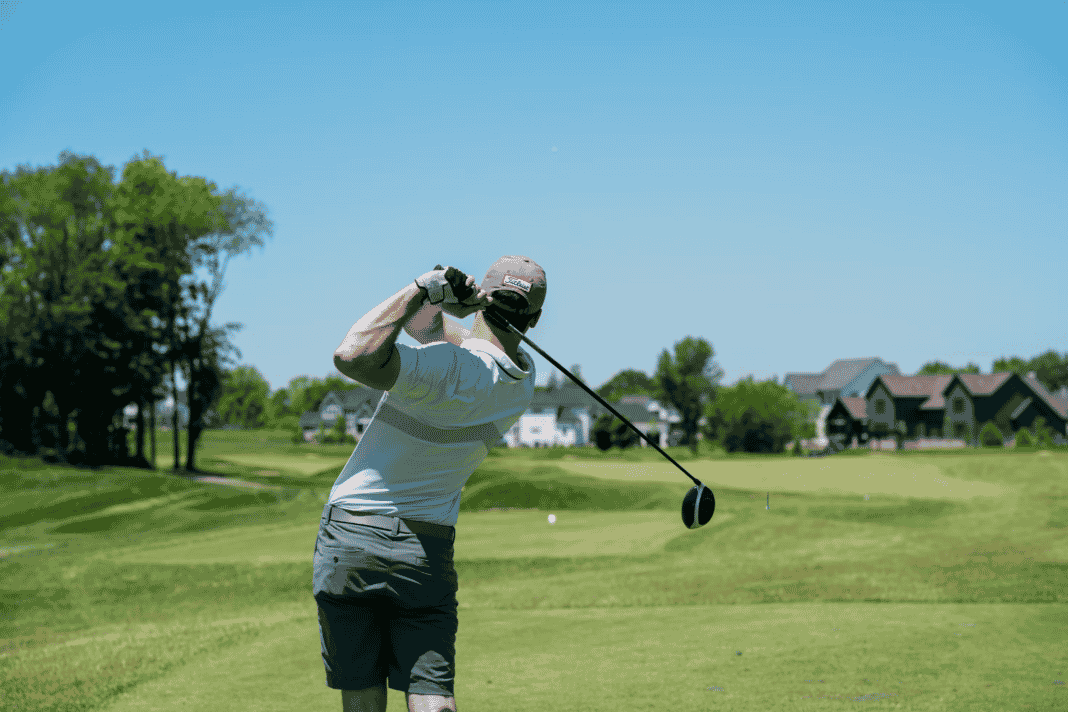- Swinging hard won’t get your balls far! If you’re new to golf, don’t make these seven silly mistakes if you want to become a professional player.
There’s nothing more favorable than a round of golf on a wonderfully bright day. Approximately 2.2 million people enjoyed this game in 2015 alone.
With that many people whacking the course for the first time, it’s no wonder there are some advantages to playing. Keep reading to find out more.
You’re not alone if you’re endeavoring with certain facets of your game!
We see amateur golfers making these seven common mistakes regularly. Here are some tips on alleviating these mistakes and getting the most from your next round.
Golf’s Brief History
Around the world, millions of people take part in golf every day. Today, you can find many golf experts teaching online and learning the basics of golf from the comfort of your home.
For instance, Linda Parker is a professional golfer who teaches golf tips and tricks with her blog Sunrise Golf.
But things weren’t always so easy. Golf is a game that has been taken advantage of for a very long time. The game draws its origins as far back as 100 BCE in Rome.
From the reign of Caesar to the present, golf has continued and evolved into a prominent and essential game worldwide. The adventures of what would ultimately become the game of golf date back to old Rome.
Ancient Romans played by fastening a ball stuffed with feathers with tree branches. Golf-like sports have also been tracked from 960 to 1279 back to China during the Song Dynasty.
The origins of modern golf can also be traced to Scotland during the mid-1400s. The Dutch were accustomed to playing a game that used sticks to punch a leather ball toward a marked place a few hundred yards away. The player who attained the target with the limited shots gained a victory in the game.
Seven Mistakes Amateurs Golfers Make that Pro Golfers Don’t
Here are seven mistakes you should avoid becoming a golf pro player. These will help you improve your golf game sooner than you expect:
1. Knees Are Excessively Bent at Address
Kneeling excessively at an address is a golf swing killer.
‘Sit down on the bar stool’ was a conventional part of the guidance we have all had at some phase, but it has ultimately no place in either contemporary instruction or your setup posture.
Bending your knees a lot makes it seem like it gives you equilibrium, but all it does is get you on your heels, compress your hips, and spruce up your spine.
After that, it is almost inconceivable to get over the ball with your top half making it difficult to hit and make good connections. If you top the ball a lot, this should be one of your checkpoints; unbend those knees!
2. Straight Arms at Address
A tip that has been probably the most prevalent in golf guidelines: “Your left arm should be straight.”
Unfortunately, most amateur golfers have grabbed this advice to the extreme. They tighten both arms and expand them straight down. It can withstand the right thing to do as the inflexibility of your arms gives you an insight of control.
But it creates exaggerated wrist action and prevents your body from changing positions freely. Golf is the only sport where we are taught to keep our arms straight.
3. Shoulders Rolled Forward
It is very much a consequence of the above mistake. When we begin to keep our arms straight, it snatches our shoulders forward in our body. They internally tighten and provide a look like you have no neck.
It may seem harmless, but it makes your takeaway almost inconceivable. As in any shooting motion, your right arm must tighten externally to produce a lot of pressure.
If you are trying to slam it hard, it could be because of the way your shoulders squat when set up. Loosen your arms up and allow your shoulders sit back in your body.
4. Extremely Strong Grip
We’ve all played with that golf course whose right-hand squats so far under the club that it stares more like a hoof than a golf grip.
These amateur golfers have a small range of shots. They struggle in, hold but can’t hit high trials around the green and struggle to hit any club that doesn’t have much left on it.
They have to shut the club from that preliminary wrist posture. If you are one of those golfers, modify it as soon as possible. Your collection of shots will improve excessively.
5. Head Buried in Your Chest
Keeping your head down is an old chunk of guidance, especially if we are inclined to outperform the golf ball.
Unfortunately, when most amateur golfers try to follow this advice, they strive to do it at the beginning, during, and into the follow-through.
Pro golfers are not trying to keep their heads down. Their chins sit high and out of their chest. It enables the body to rotate more on the takeaway and the follow-through.
Mostly the amateur looks at the grass platform as they hit balls. It enables them to turn more in the right way and gives the space into which your arms swing through consequence.
6. Swinging Too Hard
Most amateurs think they can steer the ball farther just by swinging harder. However, this eventually provides poor swing mechanics.
The goal is to swing fast but gently with fine form. It usually means a stagnant and monitored backswing with an increasingly quick pace on the follow-through.
Swinging as tough as possible isn’t instructed. It will whack from the top and come over if you try to hit as tough as possible. Consequently, you will get a bad shot that goes further into the trees.
7. Not Taking Lessons
Training from a skilled PGA professional is one of the fastest and easiest ways to enhance your golf game. However, many amateur players never do that.
Without adequate training, it’s too simple to formulate bad habits that are hard to overcome and restrict your progress. Take inspiration from the top golfers of all time and keep practicing.
Conclusion
Golf is a sport of confidence. And like everything in life, you will need patience and consistency in your practice to become a pro golf player. Along the way, be mindful of these seven silly swing mistakes amateurs golfers make that are explained here.
As you gain experience, you can strike balls into holes in fewer strokes. It will create a positive feedback loop and develop self-motivation.
Furthermore, you can always read online articles, watch videos and take lessons from experts.
FAQs
- What are the most common golf mistakes?
A thousand things can go wrong with a golf swing’s moving parts. Some of the most common mistakes amateur golfers make are slow start leads to bad rounds, swinging too fast, taking too many swings, not warming up, and wrong clubs.
- How to become a pro golf player?
Becoming a professional golfer requires time, devotion, and determination. You will be required to improve your skills through lessons and constant training.
Discovering a credible golf partner or joining a local golf club can help you understand what you require to go pro.
Once you’ve honed your mastery, you will require to take part in and excel in both amateur and professional competitions to become a professional golfer.
- What do most golfers struggle with?
Most golfers struggle with hazards. They are the area of obstacles in a golf course. For example, a water hazard is lakes and rivers, and an artificial hazard is a bunker.
- Is there an ideal body type for golf?
A mesomorph is probably an ideal body type for golf since mesomorphs have an extensive bone configuration, enormous stamina, and an inherently athletic physique.
That’s why mesomorphs are the best body type for golf. They are naturally powerful. But flexibility is still the most significant aspect if you want to play golf at a deficiency level.





